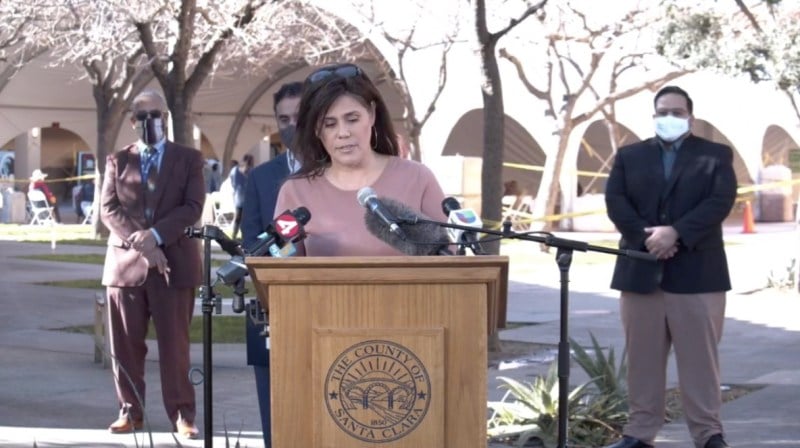Santa Clara County leaders are advocating for a vaccine distribution strategy that would prioritize neighborhoods hit hardest by the COVID-19 pandemic, they announced in a press conference on Thursday afternoon.
San Jose City Councilmember Magdalena Carrasco, joined by Assemblymember Ash Kalra and Gilroy City Councilmember Rebeca Armendariz, called on California Governor Gavin Newsom to implement “targeted strategies” for vaccination distribution that would take into account the racial demographics of a population and “COVID-19 incidence and lethality of the virus by census tract.”
Councilmember Carrasco, Santa Clara County Supervisor Cindy Chavez, and the San Jose Help and Racial Equity Task Force initially communicated these recommendations in a letter to the governor on Jan. 15.
Carrasco also asked Newsom to allocate an additional 100,000 doses to Santa Clara County and to “pressure” President Joe Biden to open a Federal Emergency Management Agency (FEMA) vaccination site in San Jose.
The plan would grant counties greater flexibility in allocating limited vaccine doses but would not affect the population category, like ages 65+, that receives vaccinations.
Carrasco said that the areas she represents are “three of the most impacted zip codes in the county of Santa Clara” and argued that neighborhoods with high numbers of COVID-19 cases and deaths should be prioritized during vaccine distribution. All areas are majority Hispanic in terms of racial composition.
“I’m urging our governor to help our most vulnerable residents get to the front of the line,” Carrasco said. “Ensuring the rapid distribution of COVID-19 vaccine to our most vulnerable communities will be critical elements in ending the pandemic and resuming normal, economic, social, and most importantly educational activities.”
Santa Clara’s Public Health Department released a statement on Wednesday urging health systems to continue to focus on vaccinating the 65+ age group before moving on to Phase 1B, the second phase of vaccine distribution, which includes frontline essential workers. The statement did not mention any of the targeted distribution strategies for which local leaders are advocating.
Kalra expanded on the importance of race as a determining factor for distribution, referencing the disproportionate number of Latinx Californians who have been impacted by COVID-19. According to Kalra and Carrasco, while Latinx individuals constitute 25% of Santa Clara County’s population, they account for 51% of its COVID cases.
“It’s not a coincidence that these zip codes are largely made up of working class Latino families who sacrifice their lives daily as essential workers and who live, in many cases, 2, 3, 4 families to a household because of the cost of living in our Valley,” Kalra said.
Jessica Paz-Cedillos, the executive director at the Mexican Heritage Plaza vaccination clinic where the press conference took place, summarized the group’s message:
“Our message to the governor is simple. Prioritize communities that had been hit the hardest by this pandemic. That would be a commitment to equity,” she said.
Contact Katie Reveno at kreveno ‘at’ stanford.edu.
